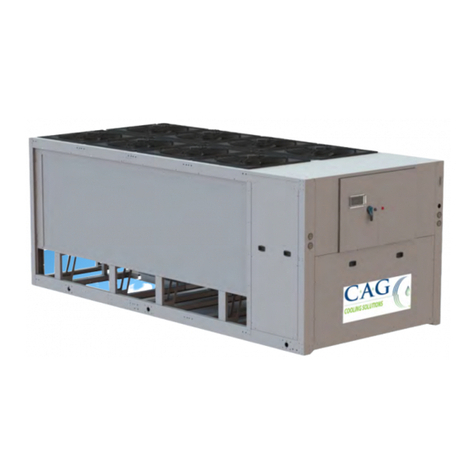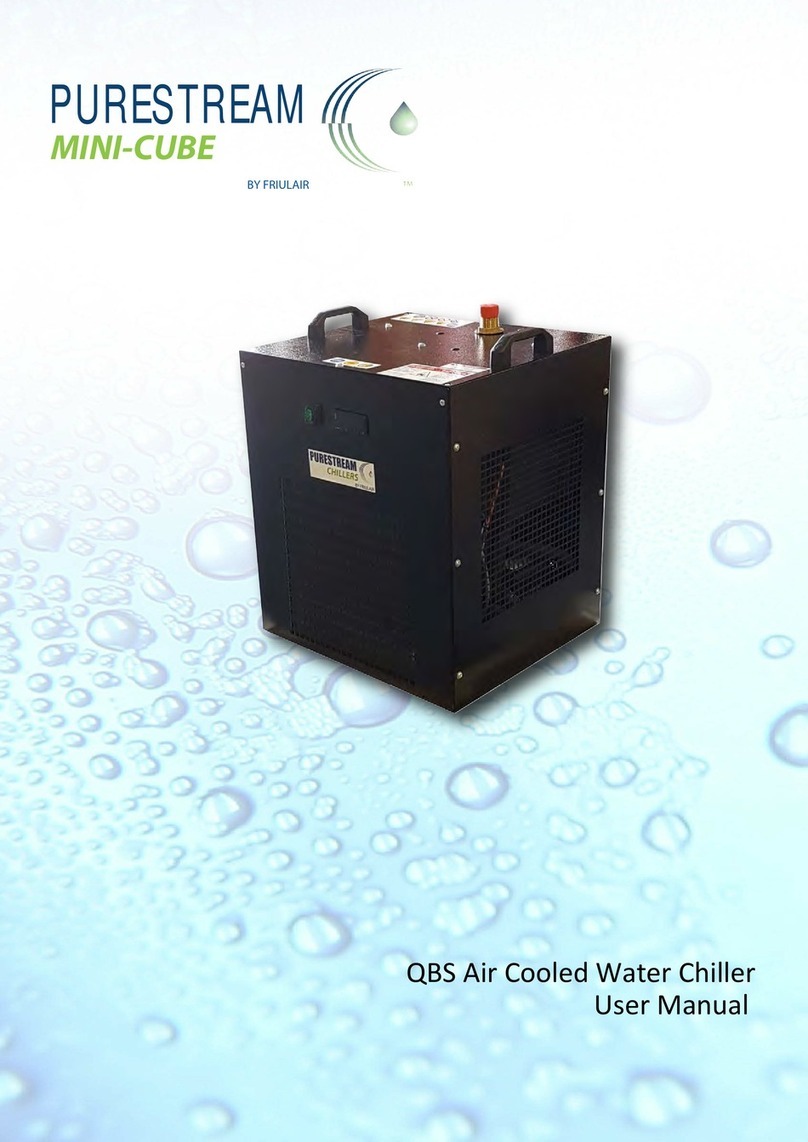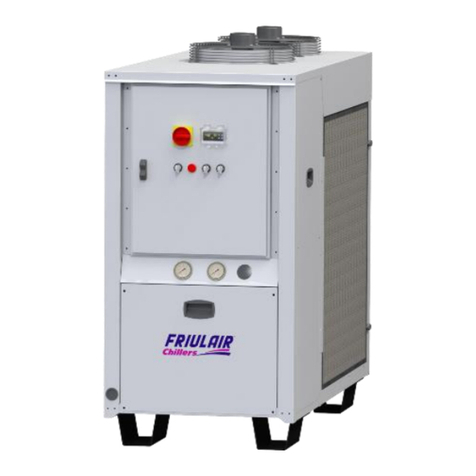
CONTENTS
1SAFETY RULES...................................................................................................... 1
1.1 Definitions of the symbols used ...............................................................................................1
1.2 Warnings ..................................................................................................................................2
1.3 Proper use of the chiller ...........................................................................................................2
1.4 Instructions for using equipment under pressure conforming to PED Directive 2014/68/EU. 3
2OPERATION AND MAIN COMPONENTS............................................................... 4
2.1 Refrigerant circuit .....................................................................................................................4
2.2 Water circuit .............................................................................................................................5
2.3 Fans..........................................................................................................................................5
2.4 Condensation control ...............................................................................................................5
2.5 Control of the water temperature .............................................................................................5
2.6 Protecting the integrity of the machine ....................................................................................5
2.7 CWE-Q units: identification of the main components.............................................................. 6
2.7.1 Version with P3 TANF LSM BR ...............................................................................................6
2.8 Spare parts...............................................................................................................................7
3INSTALLATION....................................................................................................... 8
3.1 Transport ..................................................................................................................................8
3.1.1 Handling the unit with a forklift truck or pallet jack ..................................................................8
3.1.2 Lifting with belts and tubes.......................................................................................................8
3.2 Storage.....................................................................................................................................8
3.3 Place of installation ..................................................................................................................9
3.3.1 Installation spaces....................................................................................................................9
3.4 Water connections..................................................................................................................10
3.4.1 Recommended water system ................................................................................................10
3.4.2 Use of ethylene glycol as a winter anti-freeze.......................................................................11
3.4.3 Charging the water circuit ......................................................................................................11
3.5 Electrical connections ............................................................................................................12
3.5.1 Connecting a remote on/off switch and a remote alarm indicator light.................................12
4PRELIMINARY CHECKS AND START-UP........................................................... 13
4.1 Preliminary checks and preparation for the first start-up.......................................................13
4.2 Start-up...................................................................................................................................13
4.2.1 Start-up under critical conditions ...........................................................................................14
4.3 Turning off the unit .................................................................................................................14
5ELECTRONIC CONTROLLER .............................................................................. 15
5.1 Main functions of the electronic controller buttons and meanings of the icons .................... 15
5.2 Switching on/off......................................................................................................................16
5.3 Controlling water temperature................................................................................................16
5.4 Changing the cooling set point...............................................................................................18
5.5 Changing the heating set point ..............................................................................................18
5.6 Display of inputs and outputs.................................................................................................18
5.7 Alarms ....................................................................................................................................18
5.7.1 Displaying and resetting alarms.............................................................................................19
5.7.2 Table of alarm codes..............................................................................................................20
5.7.3 Displaying alarm history.........................................................................................................20
5.8 Parameters changing.............................................................................................................21
5.9 Setting the date and time .......................................................................................................21
5.10 Low water temperatures (<32°F//0°C)...................................................................................21































